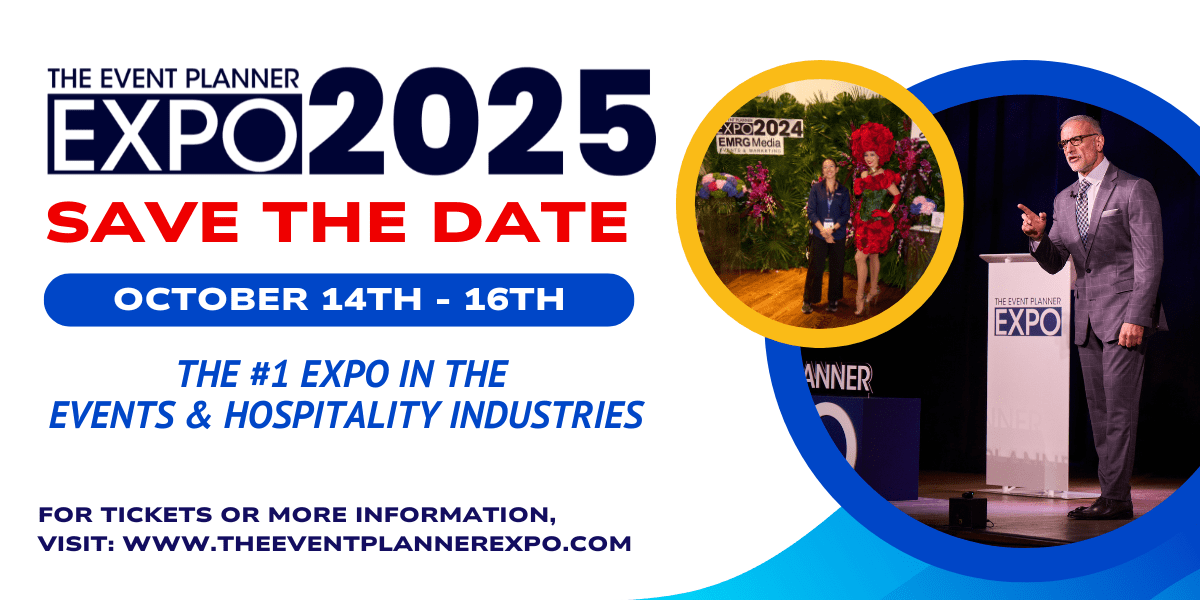Master the Art of Introductions at Conferences and Expos

You know that feeling. You meet someone at a big conference. The handshake feels right, the chat is nice, and then a week later you forget their name. Ouch.
Don’t be that person.
In this world, first impressions are currency. How you introduce yourself, whether it’s a quick hello in a crowded room or a DM slide into someone’s inbox, can either open doors for you or close them.
It’s not about rattling off your name and title. Anyone can do that. It’s about that spark, that hook, the little thing that makes someone think later, I should really follow up with them. Master the art of networking introductions with these top insights from the event planning pros.
Step One. Nail Your Personal Brand
Before you say a single word, figure out what you’re actually bringing to the table.
-
- What are you known for?
- What do clients rave about when they talk about you?
- What’s your unfair advantage?
Maybe you’re the go-to for immersive corporate galas. Maybe you’re the planner who makes tech-driven experiences feel seamless instead of stressful. Maybe you’re the one venues secretly fight to work with because you make everything run smooth.
Pick two or three things. Keep it crisp. Something like: “I design corporate events that feel like Broadway experiences.”
Or “I help brands pull off tech-forward launches people actually talk about.”
Short. Clear. Memorable.
Step Two. Tell Stories That Stick
Resumes are for paper. Stories are for people.
Think of one quick anecdote. A moment when a disaster almost derailed an event and you saved it. Or the wow-factor reveal that had a ballroom full of execs on their feet. Tell it in thirty seconds. Paint a picture. Let them feel it.
And if you’ve got a hook? Use it. Maybe you call yourself the “backstage fixer.” Or maybe it’s a signature touch you add to every event.
These little quirks help people remember you long after the name tag comes off.
And let’s not forget the basics. Eye contact. Open stance. Steady voice. Confidence is contagious. If you sound like you believe in yourself, others will too.
Step Three. Read the Room
Not every intro works everywhere.
A massive ballroom with 500 people milling around? Keep it short, keep it sharp.
A small roundtable with ten execs sipping coffee? Take an extra beat. Share a little context. Add a specific example that shows you’re more than a headline.
Do your homework ahead of time. Check the agenda. Peek at LinkedIn. See what challenges people are talking about. Then tailor your intro so it feels relevant instead of canned.
Step Four. Avoid the Rookie Moves
Even small slip-ups stick.
-
- Talking too much. Don’t drop your full résumé in 60 seconds.
- Being vague. “I do events” isn’t going to cut it in 2025. Everyone does events. Show what makes you different.
- Sounding robotic. Nobody remembers the planner who plays it safe and flat. Add a little flair. A story. A laugh. Something real.
Bringing It All Together
So here’s the deal. Craft an intro that’s clear. Add a touch of story. Match your delivery to the moment.
Do that consistently, and you’ll stand out even in a city where everyone’s competing to be noticed.
And one more tip from the trenches. Practice. Not just in your head. Out loud. In the mirror. On Zoom. Even to your cat if you have one. When it feels natural, it lands every single time.
FAQs About Event Planner Introductions
Why does a strong first impression matter?
Because it sets the tone, builds quick trust, and makes people actually remember you when opportunities come up.
What should I include beyond my name and title?
Your unique strengths, a couple of standout skills, and maybe a mini story that shows your value.
How can storytelling help?
Stories create emotion. Emotion sticks way longer than bullet points.
What mistakes ruin intros?
Oversharing, being generic, and hiding your personality.
How should I adjust for different settings?
Quick and sharp in big rooms. A bit more context in smaller groups. Always keep it relevant.
Why does body language matter?
Because people read you before they hear you. Open posture, steady voice, confident delivery.
How do I create a memorable personal brand for networking?
Identify your strengths. Stay consistent. Add a little personality people can latch onto.
Make Every Introduction Count at The Event Planner Expo 2025
Here’s the perfect place to put all this into practice: The Event Planner Expo 2025.
Three days. October 14 through 16. New York City. Hundreds of vendors, luxury venues, corporate leaders, and the planners who set the trends. Panels. Workshops. Networking sessions built for real connection.
Walk in with your best intro. Share your story. Leave with the kind of connections that can shift your entire business.
This isn’t just another conference. It’s the room you need to be in.
Tickets are moving fast. Grab yours and get ready to make introductions that stick.
